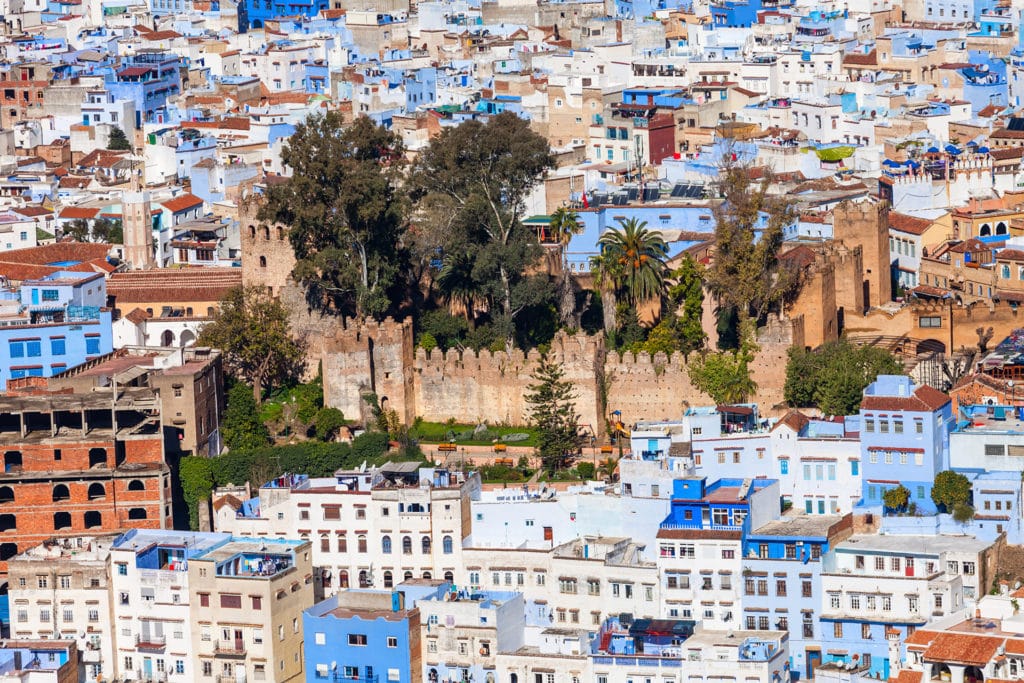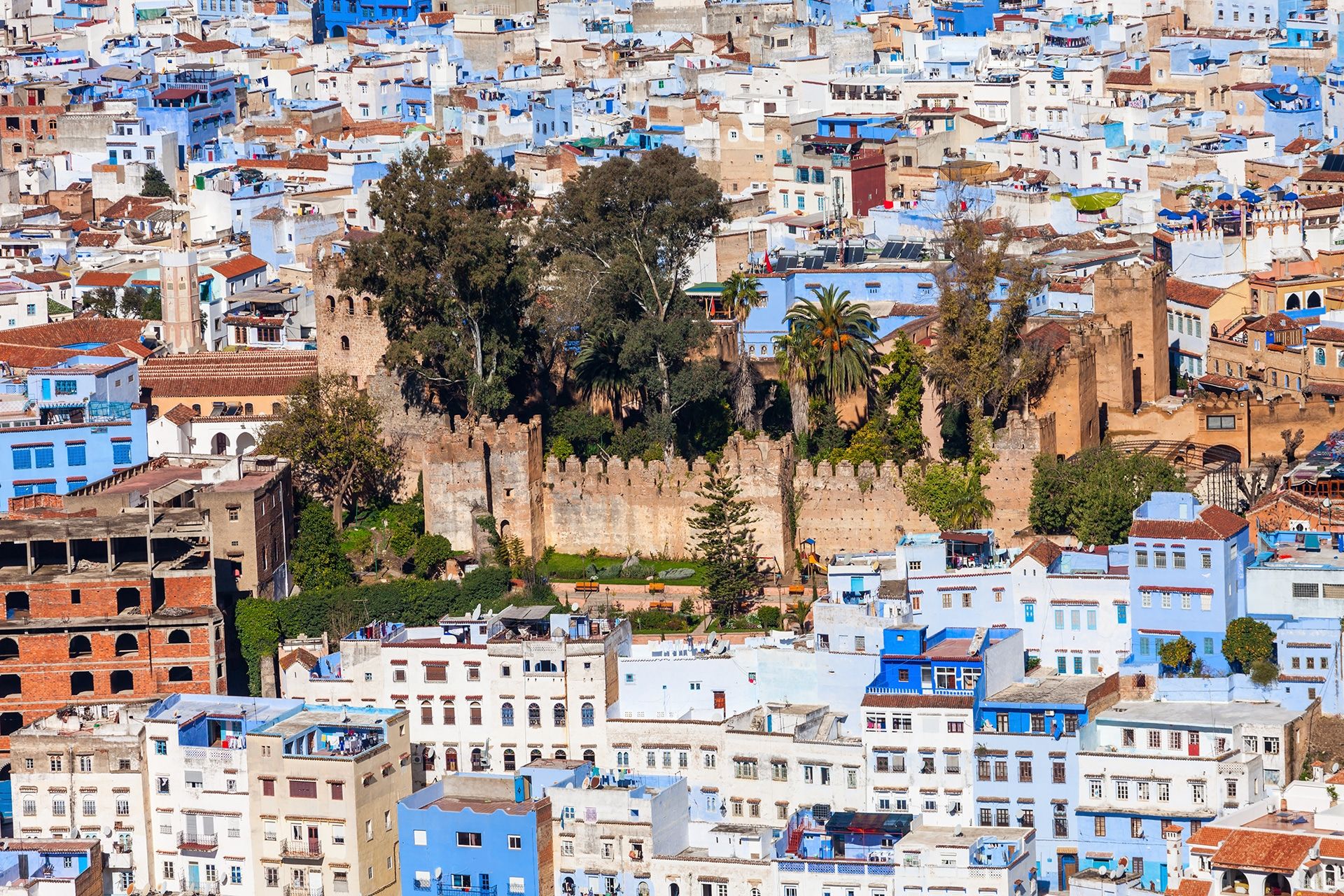You’ll notice that the traditional dress of the women in the north is quite different than in other regions…

This city, known as The Blue Pearl, is no other than the famous Chefchaouen. Aside from its blue buildings, Chefchaouen is also famous for its unique goat cheese, wool garments and woven blankets.
Built on the side of a hill, the old medina of Chefchaouen is wonderful for roaming around, allowing you to take your time and get lost while taking in the scenery with its up and down hills and stairs.
Everyone wants to know what’s up with the blue. Nobody really knows for sure. There are many stories some plausible and others outlandish. One plausible story is that the blue theme was started by the Jewish population of Chefchaouen. One rather outlandish tale is that people discovered that the color blue keeps mosquitoes away. Some say the blue was supposed to keep the city cool. No matter the reason, Chefchaouen wouldn’t be the same without its blue.
The Grand Mosque is also a sight to see with its local flavor of architecture. The historical Spanish influence is especially noticeable with the historical Fondouks (Arabic for inn) having large courtyards for merchants or parked animals while the guests slept in the upper floors.
The Kasbah of Chefchaouen contains a small ethnographic museum, an art gallery as well as a lovely garden. It offers amazing views of old Chefchaouen from high and promotes the creative works of local artists.
Recommended Length of Stay: 2 days
Find out how to make Bissara Soup, a common soup eaten for breakfast and afternoon meals.

Crisply geometric patterns of blue-and-white zellij, sun-bleached panels of carved cedar, rhythmic arcades of white plaster, sinuous lines of wrought-iron balconies: each reveals the hand of a master craftsperson and the beauty of refined materials.Susan Sully, New Moroccan Style: The Art of Sensual Living

You’ll notice that the traditional dress of the women in the north is quite different than in other regions…


God’s Bridge is on the outskirts of Chefchaouen. You’ll trek over rocks and rope bridges to get to your…

God’s Bridge is on the outskirts of Chefchaouen. You’ll trek over rocks and rope bridges to get to your goal. Once you arrive, you’ll be rewarded by a natural arch and a stunning view. Open Doors Morocco can connect you with local guides to show you the way and serve you a picnic lunch!

Thirty kilometers east of Chefchaoeun is a little natural paradise, not too well-known outside the region. This gorgeous landscape…


If you want a view of Chefchaouen from above, this is the best spot for it. The Spanish Mosque…

If you want a view of Chefchaouen from above, this is the best spot for it. The mosque was built in the 1920s by the Spanish during the Rif War. It was never a functioning mosque. Since it’s situated on the southeast part of the city, it’s a great spot to watch the sun go down and the city lights come up. How do you get there? You hike about one mile up the hill. It will take you approximately 30 - 45 minutes. Photographers will want to take a tripod. We recommend taking your phone or a flashlight to guide your steps on the way back down the hill after the sun has set. If you have an Open Doors Morocco host, he will guide you up the hill and even assist with the photographs!

The medina grew around the fortress built by Mulay Ali Ben Mussa Ben Rached. In the 1920s, Chefchaouen was…

The Chefchaouen medina surrounds the fortress built by Mulay Ali Ben Mussa Ben Rached. It has a unique history. In the 1920s, Chefchaouen was taken by the Spanish. During the 1940s, Jewish people escaping from the Nazis made their home in the medina. The Chefchaouen medina is one of the most charming medinas in the country.

The Chefchaouen Kasbah, built in 1471 by Mulay Ali Ben Mussa Ben Rached, the founder of Chefchaouen. The architectural…

The Chefchaouen Kasbah, built in 1471 by Mulay Ali Ben Mussa Ben Rached, the founder of Chefchaouen. The architectural style is Andalusian-Maghrebian complete with arches, domes, pillars, parapets, and even a small prison. It was originally built as a defense against the Portuguese who were launching attacks in the northern region of the country. It also offered protection to local groups of Muslims and Jews. There is a small ethnographic museum inside that offers a collection of artifacts from the region. Don't forget to climb the towers. They offer amazing views of the city and its surrounding areas.